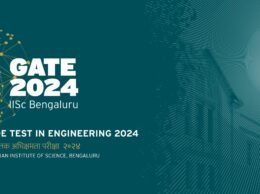The field of education is rapidly changing, and technology has become a vital component in shaping the future of learning. Educators are discovering new ways to help students learn and grow by incorporating innovative tools and methods into teaching practices. One of the most important aspects of this evolution is integrating classroom technology, which transforms traditional teaching methods and enhances the overall learning experience. In this context, it is worth exploring some key technology trends that are reshaping classroom tech trends and paving the way for smart education.
7 Tech Trends Revolutionizing Education in 2024
Here’s a glimpse into some of the latest trends in classroom technology that are poised to revolutionize smart education:
- Augmented & Virtual Reality (AR/VR): Augmented Reality (AR) and Virtual Reality (VR) have revolutionized the way we learn by creating immersive experiences that transport students to different places and allow them to interact with virtual objects. For instance, AR/VR technology can help students explore the Amazon rainforest or perform a virtual frog dissection, greatly enhancing their understanding and retention of complex concepts. By providing a hands-on, interactive learning environment, AR/VR technology has opened up new opportunities for educators to engage students and make learning more fun, effective, and engaging.
- Artificial Intelligence (AI): Artificial intelligence (AI) has the potential to revolutionize the way we approach education. With AI-powered tools, it is now possible to personalize learning experiences for students by analyzing their data and identifying areas where they need extra support. Furthermore, AI chatbots can provide instant feedback on assignments, answer student queries, and even offer basic tutoring, significantly reducing teachers’ workload and freeing up their time for more personalized instruction. The integration of AI into education has the potential to make learning more efficient, effective, and engaging and can benefit both students and teachers alike.
- Interactive Whiteboards: In recent years, interactive smartboards have gained immense popularity in the education sector. Traditional blackboards and projectors have been replaced by these digital boards for teaching, which offer numerous benefits in delivering dynamic presentations, facilitating collaboration between students and teachers, and integrating multimedia resources. With their ability to make lessons more engaging and interactive, interactive whiteboards have become a staple in many classrooms today.
- Gamification: The Future of E-learning: Gamification is a teaching strategy integrating game-like features, such as points, badges, and leaderboards, into the learning process. This approach has proven effective in increasing student motivation and engagement, making learning more enjoyable, and promoting healthy competition among learners. By leveraging gamification principles, educators can create a more interactive and immersive learning experience that can lead to better knowledge retention and improved academic performance.
- Blockchain: Did you know that blockchain technology has the potential to revolutionize how educational records are stored and shared in the future? By leveraging its secure and transparent nature, this technology can help educational institutions track student progress, verify credentials, and facilitate secure online learning platforms. This can not only streamline administrative tasks but also enhance the overall educational experience for students. The future of education looks bright with Blockchain technology.
- Rise of Micro and Nano Learning: Traditional long lectures are gradually losing relevance in the current information-driven era. Instead, micro and nano learning have emerged as popular educational alternatives, offering bite-sized content that can be consumed quickly and easily. These modules are designed to be flexible and adaptable to busy schedules, and can be accessed on mobile devices, ensuring that learners can access them anytime and anywhere. With the rise of micro and nano learning, educational content is becoming more accessible and engaging, helping learners to acquire new knowledge and skills more efficiently and effectively.
- Internet of Things (IoT): The Internet of Things (IoT) is a concept that refers to the connection of various devices to the internet, allowing them to communicate and exchange data. In the field of education, IoT has the potential to revolutionize the learning experience by creating an intelligent and interactive environment. By leveraging sensors and wearables, IoT can collect valuable data on student behavior, preferences, and progress in real-time. This data can then be analyzed to personalize instruction, improve learning outcomes, and provide teachers with insights to enhance their teaching strategies.
Incorporating these smart classroom technology can be challenging, but the benefits are undeniable. Educators willing to embrace these trends can create more engaging and interactive learning environments, leading to better academic performance and increased student engagement.
However, it is important to note that technology in the classroom should not replace traditional teaching methods entirely. Instead, it should be used to complement traditional teaching methods and create a balanced learning experience that caters to different learning styles and preferences. Moreover, educators should ensure that technology in the classroom is used safely and responsibly, with proper guidance and supervision to prevent misuse.
In conclusion, technology has transformed the field of education, and integrating innovative tools and methods can enhance the overall learning experience. AR/VR, AI, interactive whiteboards, gamification, blockchain, micro, and nano learning, and IoT are some of the most promising latest trends in classroom technology that are reshaping classroom technology and paving the way for smart education. By leveraging these technologies, educators can create a more interactive, engaging, and personalized learning experience that can benefit students and teachers alike.
Author Bio:
Aanya Kapoor, is a content marketer with Extramarks. Along with her team, she develops content relevant to the 21st-century education ecosystems. Her content revolves around topics such as smart learning technology in education, modern parenting, as well as other education topics. Her writing combines her knowledge and personal interests, making her a valuable resource for those seeking insights into education and parenting. Beyond her professional expertise, she’s an avid reader, a globe-trotter who explores diverse cultures, and a passionate gardener.






